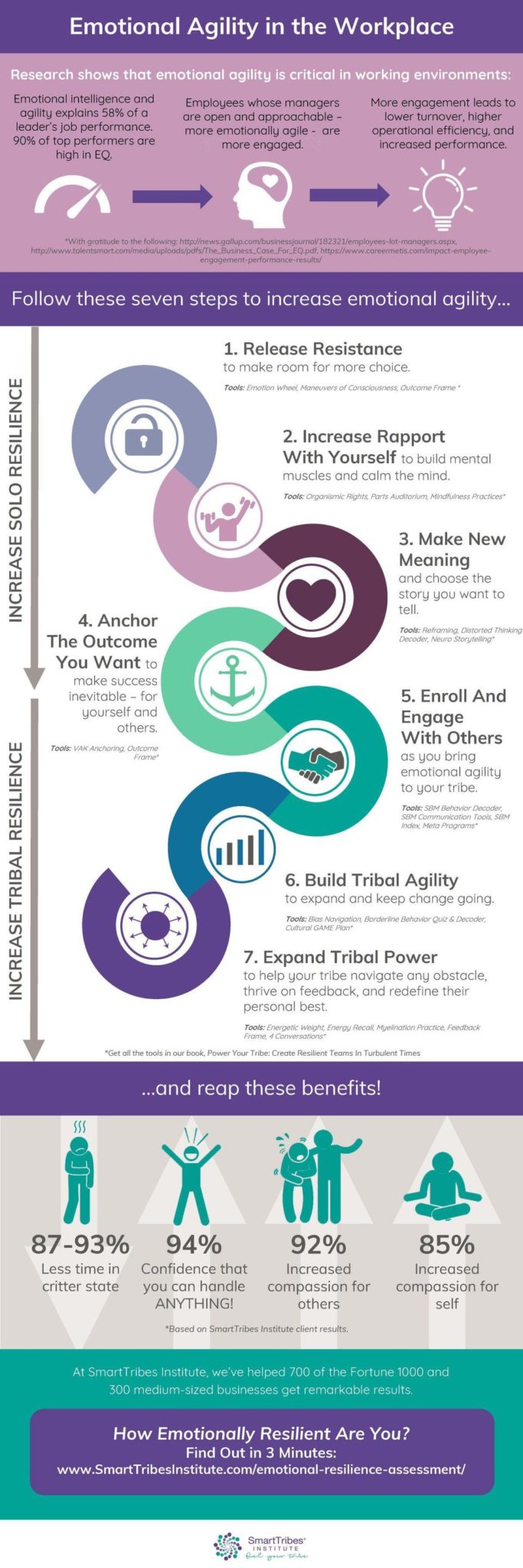There’s no shortage of talk about agility in the workplace, but not enough attention is paid to emotional agility—the ability to navigate feelings like frustration and anger in the office. Great leaders aren’t emotionless robots, and neither are the employees they lead, but sometimes negative feelings cause people to wall themselves off. We recently shared success tips from business executives, many of whom reminded us that “no man, woman, or CEO is an island.”
Emotional agility is how great leaders avoid becoming an island. Christine Comaford, writing in Forbes, explained how responding to the loss of a big client without emotional agility can have consequences, while leaders who respond with emotional agility find growth opportunities in response to such a setback.
Emotional agility isn’t just a nice quality for a good leader, it’s a huge part of what makes people successful: Comaford notes that “emotional intelligence and agility explain 58% of a leader’s job performance.”
Even if your emotional agility is low, the author provides seven steps to increase it—check out the infographic below. By following these steps, leaders can become more compassionate and confident towards both themselves and their employees. Becoming more emotionally agile will help open up the lines of communication and trust in the workplace, which is a critical component of long-term success.
Emotional agility requires you to “anchor the outcome you want.” Contact Us Today and we’ll help you develop a plan for achieving the business outcomes you desire.
Infographic courtesy of SMARTTRIBES INSTITUTE


